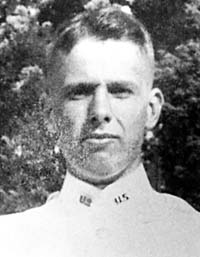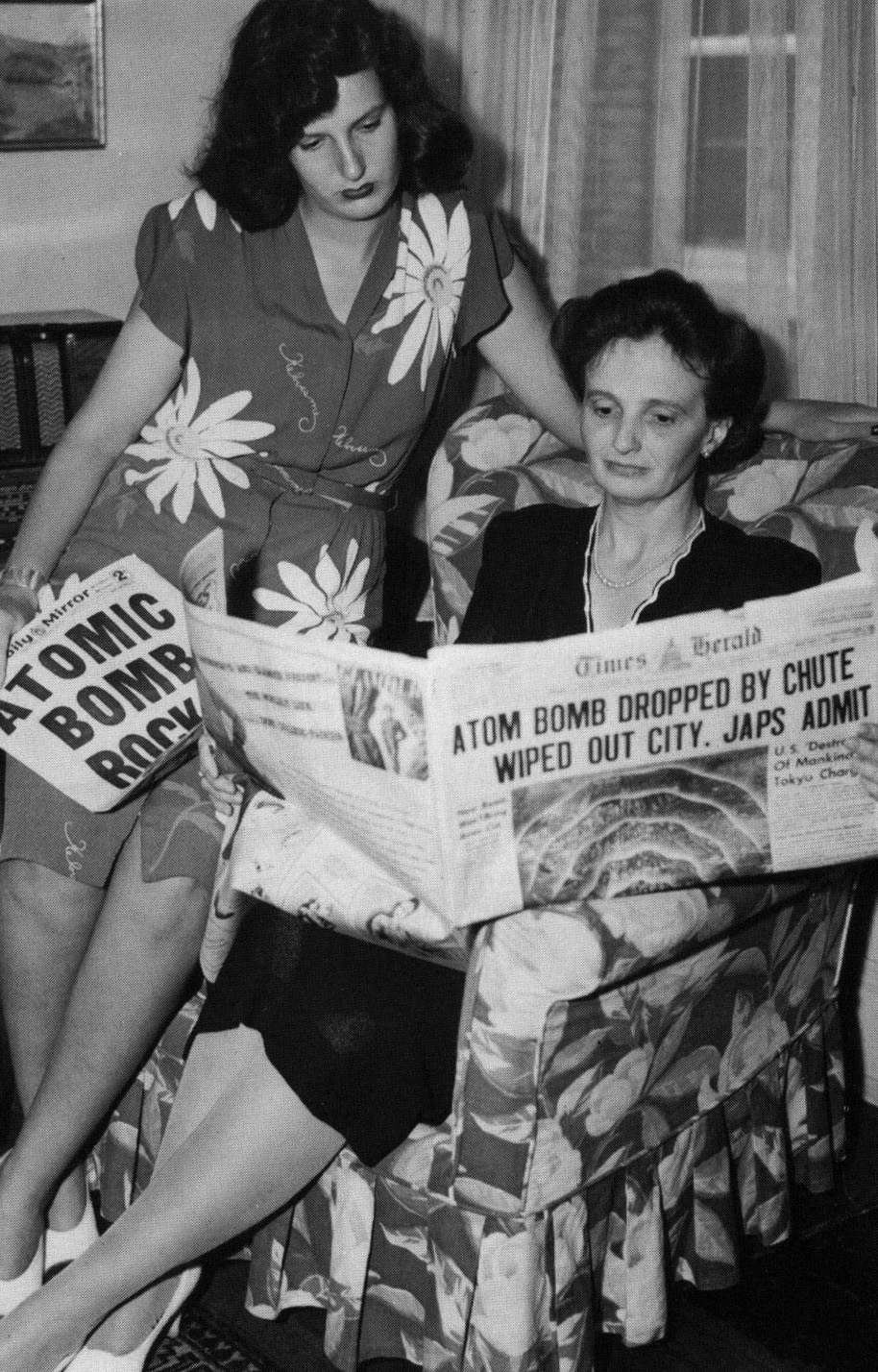Every day from September 1942 until August 1945, Manhattan Project Director General Leslie Groves would leave his modest brick home located on 36th St in Washington, DC’s historic Cleveland Park neighborhood at 6:15 AM. He would climb into his green 1942 Dodge four-door sedan, and make the fifteen minute drive to his office at the New War Building. There he oversaw the secret project to build the world’s first atomic bomb.
Groves and his wife, Grace, had moved to the neighborhood in August 1939 to be near the National Cathedral School for Girls where their daughter, Gwen, attended school. Their son, Richard, attended West Point Academy during the War and stayed in the fourth bedroom during visits home.
Now you can hear interviews with each member of the Groves family on the Voices of the Manhattan Project website. Stephane Groueff recorded more than twelve hours of conversation with the General in 1965 for his book, The Manhattan Project. Groves discusses everything from his family genealogy and early childhood to his involvement in the Manhattan Project and his relationships with the scientists and engineers who built the bomb.
Groves, the son of a Presbyterian minister, recalled his early upbringing and the respect he had for his parents, who emphasized education and discipline. “I was particularly fortunate in that my father was so extremely well educated,” says Groves. “My mother was extremely well read. The conversation at the dinner table was always of an uplifting character.”
Groueff also recorded an interview with the General’s wife, Grace, who admired her husband’s determination and ability to make tough decisions. “We had a name for him, Judge DNO,” recalls Grace. “Whenever anything had to be decided we would bring it to the judge, Judge DNO.” She went on, “I’ve always envied him terrifically. I think that he’s quite unusual. I’ve always thought so. I admire him more than anyone I’ve ever known.”
Like the Manhattan Project, Groves took command of his family, especially when it came to raising his two children. “He was really the king of the household for all the big decisions: where we would go to school, what we would study, what our sports would be,” says daughter Gwen in her 2013 interview with AHF President Cindy Kelly. “It was an old-fashioned family, I suppose. Ours was firmly a pyramid of authority.”
Groves was especially firm when it came to his son, Richard. “I used to get letters periodically from my father when I was at West Point,” remembers Richard in his 2007 interview. “They were all in the nature of dealing with my shortcomings, and telling me to buck up—the kind of letter that you probably got. If you didn’t, you should have.”
 Despite the General’s tough love, he always had his children in mind. “Within the family we lived very frugally,” says Gwen. “I think their funds went to us to improve us, not for frivolous things really, but to develop us.” Richard went on to a distinguished career in the Army, serving in postwar Germany, the British West Indies, and two tours in Vietnam. Gwen, who graduated from Bryn Mawr College in 1950, met and married her husband, John Robinson, while working as a research assistant at Princeton’s Institute for Advanced Study in 1954.
Despite the General’s tough love, he always had his children in mind. “Within the family we lived very frugally,” says Gwen. “I think their funds went to us to improve us, not for frivolous things really, but to develop us.” Richard went on to a distinguished career in the Army, serving in postwar Germany, the British West Indies, and two tours in Vietnam. Gwen, who graduated from Bryn Mawr College in 1950, met and married her husband, John Robinson, while working as a research assistant at Princeton’s Institute for Advanced Study in 1954.
Groves’ commitment to his family meant keeping some things secret, namely his work on the atomic bomb. Grace, Richard, and Gwen were shocked to learn about their father’s involvement on the project when the first bomb was dropped on Hiroshima on August 6, 1945. “It was on the radio—that is where we first heard about it,” recalls Gwen. “It was a big bomb, and there was my father—he had done all this work. My mother was truly astonished.”
Groves, who passed away in 1970, had no regrets about his role in building the atomic bomb. “He was intensely proud of the Manhattan Project and proud of the people that worked on it,” said Richard, “All 200,000 of them, not just the “fancy dans” that wrote books, but the people that were out there doing the mucking around in the mud.”
AHF’s Voices of the Manhattan Project website now features over 250 interviews with Manhattan Project veterans and experts, with new oral histories being added every week. The website has become a great resource for scholars, students, and the general public interested in the history and legacy of the Manhattan Project.





